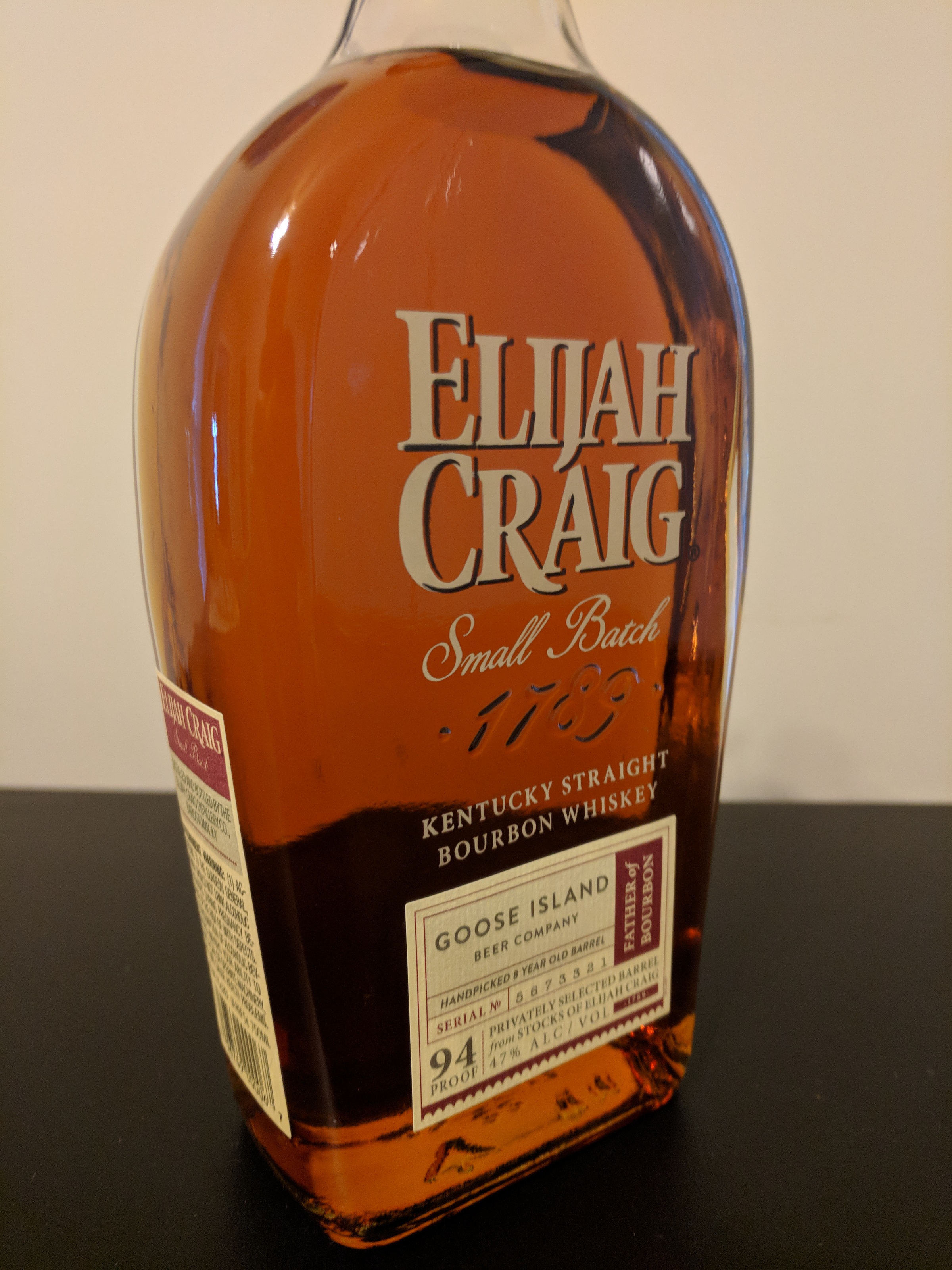Goose Island Teams Up With Heaven Hill for Small Batch Bourbon
Beer gets into the whiskey bottling game.
photo by Kevin Gibson
What started as an experiment more than two decades ago that involved putting beer into bourbon barrels has evolved into selecting a limited edition single barrel bourbon release.
It’s a long story.
Any beer enthusiast is familiar with Goose Island Brewery’s famed Bourbon County Stout, the result of an experiment by former head brewer Greg Hall. The beer has taken on something of a legend status since it was first created in the mid-1990s, and that popularity has in recent years led the brewery to create annual variants, from flavor-infused versions of the imperial bourbon-barrel stout to single-barrel versions.
The brewery’s barrel broker offered up some 12 Year Elijah Craig barrels from Heaven Hill Distillery, a first for Bourbon County Stout, and the two entities decided to co-brand the resulting beer to create 2018 Bourbon County Stout Reserve.
And so, the Goose Island team traveling to Bardstown, Ky., to do some barrel-picking, all while filming a documentary about the legendary beer. The idea arose to partner on another project while the Goose Island representatives were on site, to do a co-branded release of small-batch, hand-picked Elijah Craig bottles. The distillery picked out 10 barrels for the Goose Island team to taste as a process to select five for bottling.
“We’re huge fans of that bourbon, regardless,” Mike Smith, a certified bourbon steward for Goose Island’s education program who describes himself as the brewery’s “barrel guy.” So, to be able to do a co-branded version with Heaven Hill, he said, was something of a no-brainer.
Of course, choosing the barrels—five were bottled, aged eight, 10 and 11 years, respectively—was the fun part. Smith said the parties tasted their way through all 10 barrels back to back, which was “a pretty big feat.” Smith and head brewer Mike Siegel, working with then-Heaven Hill master distiller Denny Potter (who has since moved on to Beam Suntory), learned on the fly how to taste bourbons back to back and to distinguish the unique flavor profiles of each. “It really was kind of bettering our sense of how to drink bourbon and look for the nuances from barrel to barrel, and the differences,” he said, adding that there was footage shot of the tasting that didn’t make the documentary.
The eight-year-old barrel, he said, came from the top level of the rickhouse, while the 10 and 11 year-old barrels had been aging closer to the bottom. Smith was surprised by some of the subtle nuances. He said that 8 year-old barrel brought citrus and cinnamon characteristics that struck them immediately. “That was one we thought right away, ‘That’s one we[re going to pick before we get through the remaining barrels.’”
Goose Island sampling from barrels at Heaven Hill, courtesy Goose Island
I was afforded a sample of some of the 11 year-old and found it to be just as Smith described it to me, with plenty of dark fruits and caramel in both the nose and flavor profile. I also found hints of cinnamon in that batch, with requisite oak, char and a smooth finish.
All of the co-branded bourbon was proofed to 94. Smith said the bottles are limited in number, but that many of them made it into the Chicago and Philadelphia markets, as well as in Kentucky.“ They’ve got their own characteristics from just that one barrel, they’re not blended,” Smith said. “It’s the same thing as with the Reserve. It’s really cool to have fans [of Bourbon County Stout] kind of connect with us in a different way. They like our beer … but to drift over to the bourbon world and put our stamp on the barrels we drank was pretty fun.”
It’s kind of a full-circle story, if you will.
“It’s a crazy history to think back when Greg was putting imperial stout in barrels in the mid-’90s,” Smith added. “I think we’re just at the tip of the iceberg of what we can do with these kinds of projects.”


